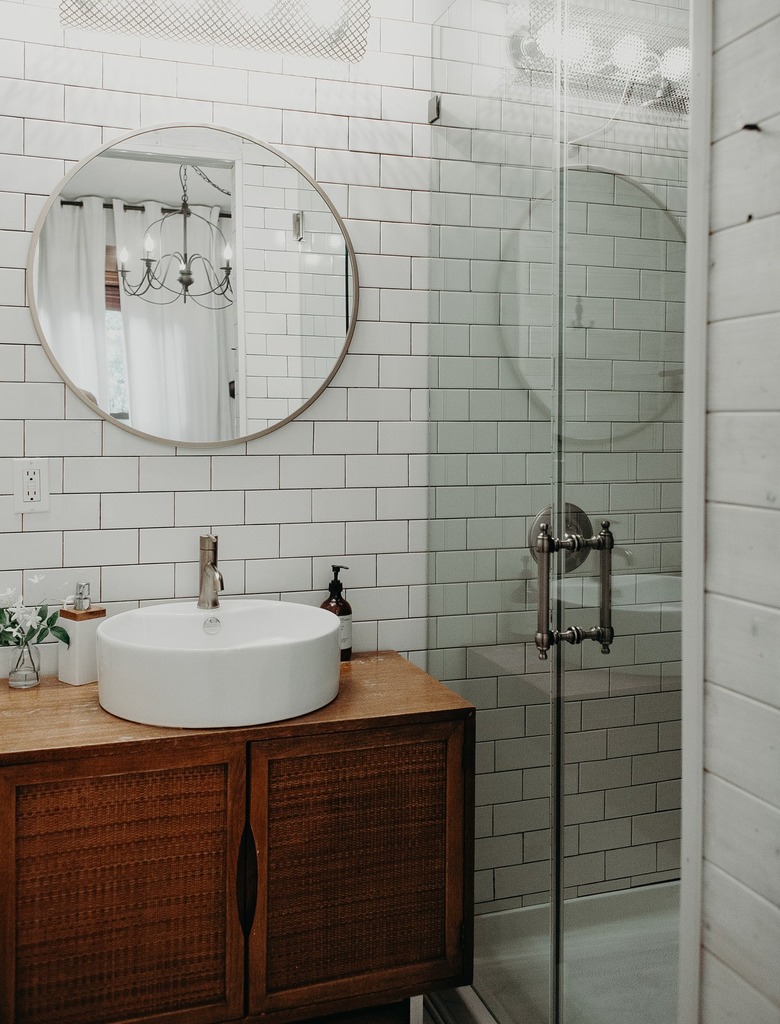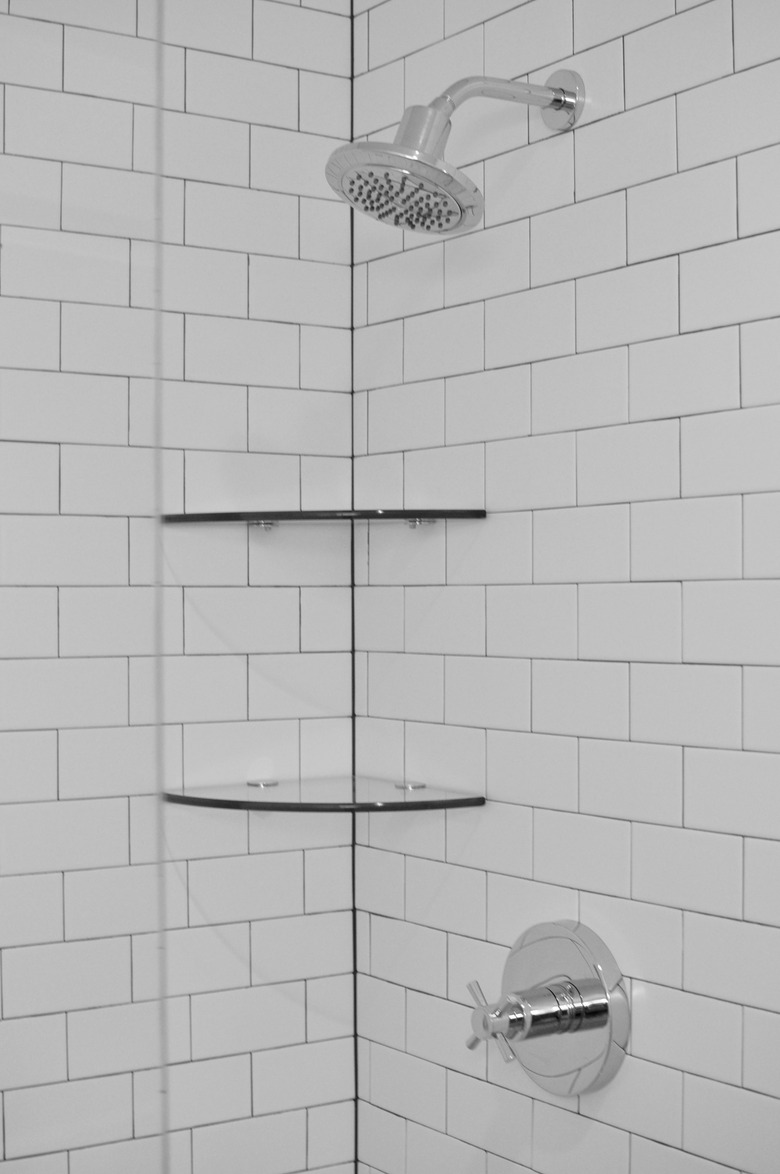How To Really Clean Shower Wall Tiles And Grout
We may receive a commission on purchases made from links.
Dirty grout can make your whole shower look dingy, especially when the shower tiles are covered in soap scum. Dirty grout isn't just gross to see when you're trying to step in for a relaxing shower; it can also pose a health hazard since it's often filled with mold and mildew. If your shower walls are starting to look grimy, it's time to start cleaning. The good news is that while cleaning tiles and stained tile grout can be a pain, if you clean them regularly, the process can be relatively quick and painless.
How to Clean Grout
How to Clean Grout
It shouldn't be surprising that the longer you go without cleaning, the dirtier your grout gets. That's why it's a good idea to seal your grout yearly and scrub it once a week with a grout brush or toothbrush and warm water. When you notice hazing or staining, you'll need to add a cleaning solution to the process.
Always start by using the most mild grout cleaner first and then move on to the next-strongest cleanser if necessary. It's worth noting that while many sources recommend using vinegar, the Tile Council of North America recommends avoiding the use of vinegar or other acidic cleaners on grout or stone tiles since it can cause erosion of these materials.
Only move on to strong chemical cleaners if you have particularly stubborn stains that just won't come out and if elbow grease isn't enough. Test all cleaning products on a small, inconspicuous area of the grout before using them in a larger area, especially if you have colored grout that could fade.
- Add just enough water or hydrogen
peroxide to 1 cup of baking soda to make a paste. Spread it along the grout lines and
then let it sit for a few minutes. - Use a scrubber dipped in water to scrub away the paste.
Rinse it thoroughly with clean water. - If baking soda paste has failed, mix 3/4
cup of chlorine bleach into 1 gallon of water or purchase a commercial grout
cleaner like Grout-EEZ. - Dip a towel into the cleaner and spread it on a small area
of the grout. Try to prevent it from splattering on other surfaces. Allow it to
sit for a few minutes. - Use a stiff brush made from nylon to scrub the stains from the grout and then rinse it
with hot water. Never use a wire brush, as
it can damage tile and grout.
When using chlorine bleach or chemicals containing bleach, always follow directions thoroughly, never use these products at higher concentrations than recommended, always wear gloves and ventilate the area. Only use bleach as a last resort because caustic cleaners like this can damage grout.
How to Steam-Clean Grout
How to Steam-Clean Grout
Another way to clean grout that may eliminate deep, set-in stains is to use a steam cleaner with a grout brush nozzle. This is both eco-friendly and safe for all types of tile, but not every steam cleaner works on shower tile and grout, so make sure you have the right tool for the job. Always ensure the steam cleaner is fit with a nylon brush and not a wire brush that could damage your grout. Also, never use a steam cleaner on damaged grout, as it can trap moisture below the surface.
- Use a sponge and mild dish soap on the shower walls to loosen
any grime or other residue that could clog your steam cleaner. - Follow manufacturer instructions to fill and prepare your
steamer for use. Always use caution while using a steam cleaner, as hot steam
can easily scald skin. - Scrub the grout back and forth with the brush, working slowly in small sections from the top of the shower down. Wipe away the dirty water with a sponge periodically so it doesn't settle
into the rest of the grout. Clean the brush regularly as well so it doesn't
start to spread grime.
How to Clean Shower Tiles
How to Clean Shower Tiles
Just like grout, the key to cleaning shower tiles is to start with the most gentle cleaner and then move on to a stronger shower cleaner if your first attempt fails. These cleaning tips are suitable for glass, porcelain and ceramic tile but should be avoided for stone bathroom tile, such as travertine, marble, granite and slate, since these are more delicate. While glass, porcelain and ceramic tiles are all durable, avoid using anything abrasive when cleaning the tiles to avoid scratching the surface of the tiles and avoid using vinegar, as it can damage the grout.
- Fill a sprayer with a cup of warm water, 2 cups of vinegar and 1 cup
of grease-busting dish soap like Dawn.
Spray along the shower walls and let it sit for 15 minutes. - Use a scrub sponge to clean the residue from your shower
walls. - Rinse the walls with a showerhead or a bucket of water,
making sure to close your shower curtain or shower doors first. Dry the walls
with a squeegee or microfiber cloth to see if they're fully clean. - If the shower still has stains and grime, try a powdered oxygen
bleach like OxiClean.
Combine two parts oxygen bleach with one part water to make a paste. Spread the
paste on your tile shower walls. Let it sit for 15 minutes. - Use a scrub sponge to clean away the oxygen bleach paste.
Then, rinse thoroughly with clean water.
How to Clean Stone Tiles
How to Clean Stone Tiles
When it comes to cleaning stone shower tiles, never use anything acidic, including vinegar, ammonia or citric acid, as these cleansers can damage natural stone. If you're not entirely sure if a cleanser is acidic, avoid using it on your stone tile. Stone requires some regular maintenance to prevent damage from soap scum, water stains and more. It should be sealed once a year and cleaned once a week with a mild, stone-safe tile cleaner.
If you notice grime like mold and mildew building up, you can clean your shower tile with chlorine bleach. Always wear gloves and ventilate your bathroom while working with bleach. Simply make a solution with equal parts water and bleach. Spray this onto your tile and then use a nonscratch nylon pad with gentle scrubbing motions to rub the solution into the stone. Let it sit for about 15 minutes before rinsing with clean water.


